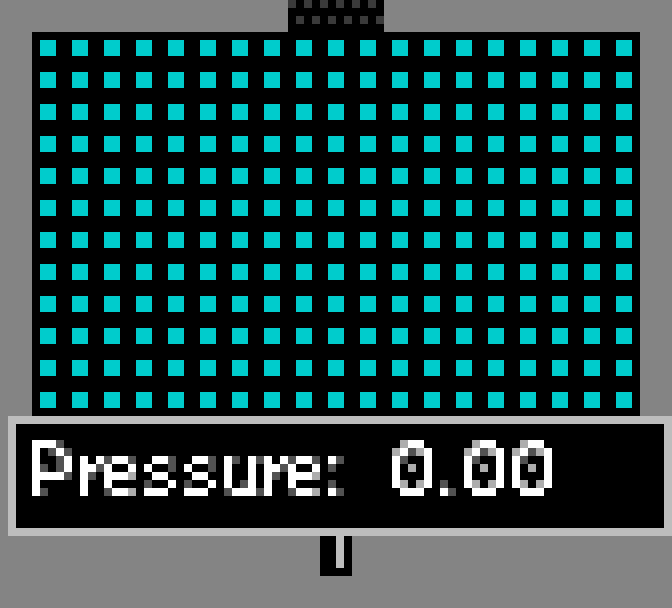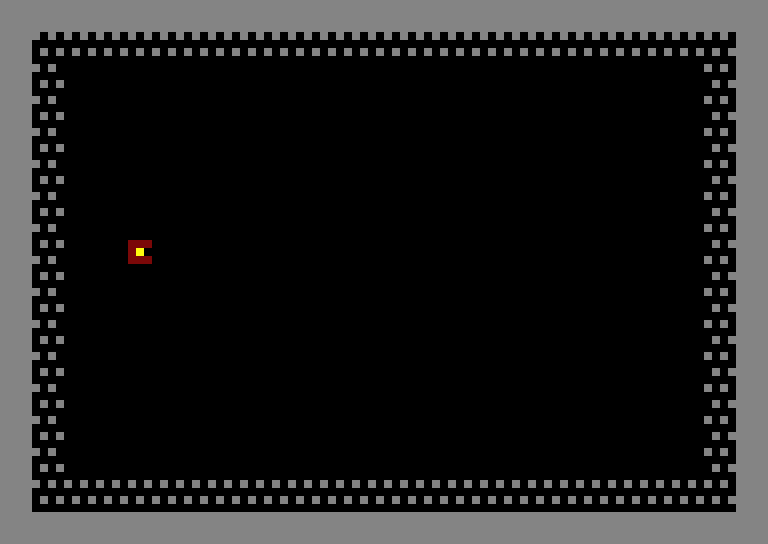Difference between revisions of "Element:INVS"
(talk) |
m (Reverted edits by HerpesMaster11 (talk) to last revision by jacob1) |
||
| (15 intermediate revisions by 9 users not shown) | |||
| Line 1: | Line 1: | ||
| − | INVS | + | {{ infobox Element |
| + | | icon = INVS.png | ||
| + | | longname = Invisible | ||
| + | | image = | ||
| − | + | | identifier = DEFAULT_PT_INVIS | |
| + | | name = INVS | ||
| + | | description = Invisible to particles while under pressure. | ||
| + | | colour = 00CCCC | ||
| + | | menusection = SC_SENSOR | ||
| + | | menuvisible = 1 | ||
| + | | advection = 0 | ||
| + | | airdrag = 0 | ||
| + | | airloss = 0.9 | ||
| + | | loss = 0 | ||
| + | | collision = 0 | ||
| + | | diffusion = 0 | ||
| + | | explosive = 0 | ||
| + | | falldown = 0 | ||
| + | | flammable = 0 | ||
| + | | gravity = 0 | ||
| + | | hardness = 15 | ||
| + | | heatconduct = 164 | ||
| + | | hotair = 0 | ||
| + | | meltable = 0 | ||
| + | | state = ST_SOLID | ||
| + | | temperature = 295.15 | ||
| + | | weight = 100 | ||
| + | | properties = TYPE_SOLID PROP_NEUTPASS | ||
| + | | lowtemperature = | ||
| + | | lowtemperaturetransition = | ||
| + | | hightemperature = | ||
| + | | hightemperaturetransition = | ||
| + | | lowpressure = | ||
| + | | lowpressuretransition = | ||
| + | | highpressure = | ||
| + | | highpressuretransition = | ||
| + | }} | ||
| + | |||
| + | When exposed to high enough or low enough pressure, INVS becomes intangible, allowing particles to pass through like E-wall. | ||
| + | |||
| + | == Reactions == | ||
| + | |||
| + | * {{MaterialBtn | PHOT}} → {{MaterialBtn | NEUT}} - when passing through unpressurised INVS | ||
| + | * {{MaterialBtn | PROT}} → {{MaterialBtn | NEUT}} - when passing through INVS at any pressure | ||
| + | |||
| + | == How to use, with pictures == | ||
| + | |||
| + | INVS element is simple enough. It's a blue solid that, when exposed to > X pressure, or < -X pressure, essentially opens up and allows other elements to pass through it. | ||
| + | |||
| + | X = tmp if tmp is not 0 | ||
| + | |||
| + | X = 4 if tmp is 0 | ||
| + | |||
| + | [[File:0Jrz5.gif]] | ||
Once pressured or vacuumed, elements will lose their collision with one another in addition to passing into the INVS. This effectively makes it possible to store an infinite amount of mass inside of an INVS block. | Once pressured or vacuumed, elements will lose their collision with one another in addition to passing into the INVS. This effectively makes it possible to store an infinite amount of mass inside of an INVS block. | ||
| − | [[ | + | [[File:0mXc8.gif]] |
...However, INVS is not like Ehole. Particles passing through INVS are not prevented from falling right back out, so care should be taken. Elements will drop out of INVS and resume having collision and mass once outside. | ...However, INVS is not like Ehole. Particles passing through INVS are not prevented from falling right back out, so care should be taken. Elements will drop out of INVS and resume having collision and mass once outside. | ||
| − | [[ | + | [[File:X3FNF.gif]] |
| − | Due to the fact that INVS conducts heat, GOL or other element combinations can be used to heat it, where under pressure other elements will pass through it and absorb this heated temperature. This is a comically efficient way of heating matter that can heat any amount of particles at once. | + | Due to the fact that INVS conducts heat, [[Element:LIFE | GOL]] or other element combinations can be used to heat it, where under pressure other elements will pass through it and absorb this heated temperature. This is a comically efficient way of heating matter that can heat any amount of particles at once. |
..The animation has low quality color. The only view that showed them going through was fire >_>; Notice how the salt turns to lava while passing through. | ..The animation has low quality color. The only view that showed them going through was fire >_>; Notice how the salt turns to lava while passing through. | ||
| − | [[INVS| {{ | + | [[File:Fvs6q.gif]] |
| + | |||
| + | Finally, INVS can be used as a photon gun cap that turns any {{Material | PHOT}} passing through into {{Material | NEUT}}. It can be used to make neutron lasers, effectively. | ||
| − | + | [[File:RnCDI.gif]] | |
| − | + | {{Languages}} | |
Latest revision as of 04:53, 26 December 2022
| Properties | |
|---|---|
| Section | Sensors |
| Spawn temperature | 22°C |
| Heat Conductivity | 65.6% |
| Relative weight | 100 |
| Gravity | 0 |
| Acid dissolve rate | 1.5% |
| Flammability | 0 |
| State | Solid |
| Misc properties | |
| Allows neutrons to pass through | |
| Source code | |
When exposed to high enough or low enough pressure, INVS becomes intangible, allowing particles to pass through like E-wall.
Reactions
How to use, with pictures
INVS element is simple enough. It's a blue solid that, when exposed to > X pressure, or < -X pressure, essentially opens up and allows other elements to pass through it.
X = tmp if tmp is not 0
X = 4 if tmp is 0
Once pressured or vacuumed, elements will lose their collision with one another in addition to passing into the INVS. This effectively makes it possible to store an infinite amount of mass inside of an INVS block.
...However, INVS is not like Ehole. Particles passing through INVS are not prevented from falling right back out, so care should be taken. Elements will drop out of INVS and resume having collision and mass once outside.
Due to the fact that INVS conducts heat, GOL or other element combinations can be used to heat it, where under pressure other elements will pass through it and absorb this heated temperature. This is a comically efficient way of heating matter that can heat any amount of particles at once.
..The animation has low quality color. The only view that showed them going through was fire >_>; Notice how the salt turns to lava while passing through.
Finally, INVS can be used as a photon gun cap that turns any PHOT passing through into NEUT. It can be used to make neutron lasers, effectively.
| Language: | [[::Element:INVS|English]] |
|---|




